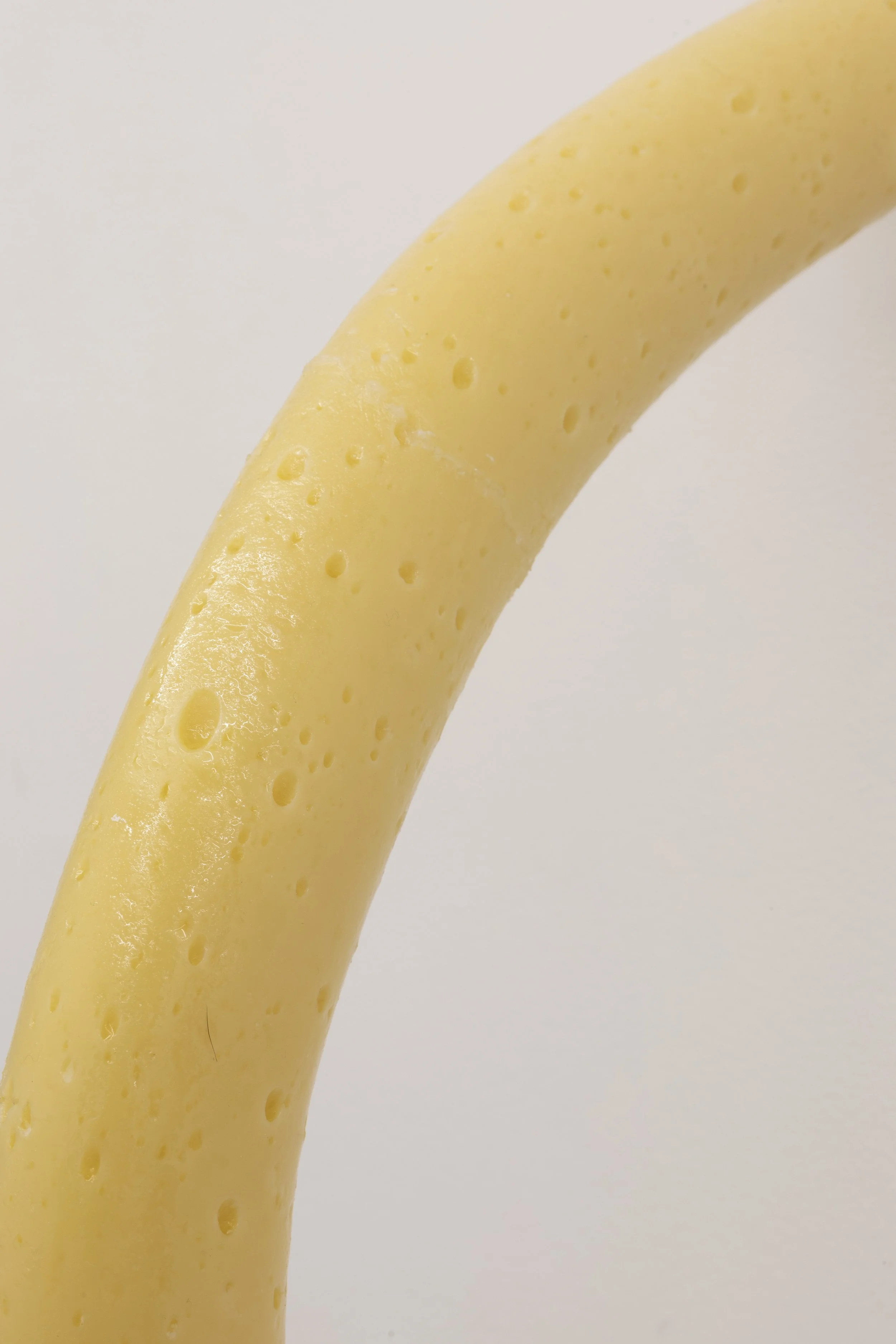




Photos by: Jessica Maurer
Gallery 2
Press against; Soften into
Erin Hallyburton
roomsheet
Press against; Soften into explores fat as a material, an identity and a form of embodiment. The exhibition responds to conventions in contemporary art that distinguish between normal and fat bodies. Erin Hallyburton develops spatial and material practices inspired by the volatility and ambiguity of fat as a material. By adopting the formal qualities of structures that aid and support bodies in public spaces, the sculptural installation questions how different kinds of bodies are supported, or fail to be supported in contemporary art.
Fats and oils have the ability to absorb and be absorbed, liquify and solidify, coat, and protect, erode, and dissolve, emulsify with resistant substances, or to be rendered down into concentrated energy. Fats are volatile, viscous, and ambiguous and they contain a rich potential to transform. The exhibition features materials that share many of these characteristics, such as cheese and bioplastic. Through their ability to mutate and transform, these materials can question whether there are solid tangible boundaries that separate a body from its surroundings. These materials create sculptural works that transform over time, challenging dominant conceptions of the body as having a coherent, autonomous, and discrete form.
Handles, rails, and seats inform the formal qualities of the sculptural works. By incorporating elements reminiscent of support structures, Hallyburton challenges assumptions that the bodies of viewers adhere to normative height, weight, and mobility ranges. Due to the fragility and transience of Hallyburton’s chosen materials, there is a threat of collapse embedded in the work that echoes the experience of fat people engaging with objects and spaces not made to properly support them. In this way, the exhibition develops a critical discourse on the structural support that is offered to fat artists and viewers in the space of contemporary art.
